- Joined
- Dec 2, 2005
- Messages
- 69,035
Very nice indeed, and looking forward to seeing what you get next week 

Last edited:
The BladeForums.com 2024 Traditional Knife is ready to order! See this thread for details:
https://www.bladeforums.com/threads/bladeforums-2024-traditional-knife.2003187/
Price is $300 ea (shipped within CONUS). If you live outside the US, I will contact you after your order for extra shipping charges.
Order here: https://www.bladeforums.com/help/2024-traditional/ - Order as many as you like, we have plenty.



Not on my schedule for this week, and I forgot about the proposal for the 14th of each month until I'd arrived at work, but I can at least carry a lambsfoot around the house this evening in support of Lambsfoot Love! :thumbup:
...
(My knife was previously approved as a lambsfoot example, but today I'm not seeing much taper on the blade. Why am I suddenly assailed by doubts??)
- GT
i think the taper on this one is subtle, making it a cross "shlambsfoot" maybe?

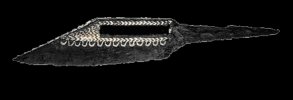
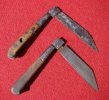
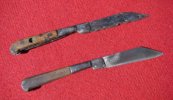
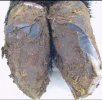
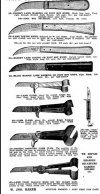
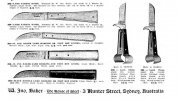
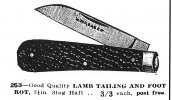
- GT
ACK!! The lower-case gremlins came out of nowhere and ambushed me!
Oops, in the course of typing this edit, the gremlins may have gone back into hiding?

I also think that the Sheepsfoot gained popularity over the Lambsfoot, because most thrifty country folk in the US, Australia and Britain, when faced with a choice between either pattern would choose 'the one that has more steel in the blade, because it'll last longer'.
One other thing I've been curious about, and for which I have no answer, is, were the 'Real Lambfoot' etched blades from a single source? I know I've seen them on different makers' knives, but they still may have bought the blades from the same place.
Another theory I had, is the Lambsfoot may have been a pattern introduced to compete with the Wharncliffe, which I'm guessing may have been a regional variant adapted and popularised by Joseph Rodgers. Reading between the lines, I had always assumed the naming of that pattern had something to do with a gesture to the Earl of Wharnclife for laying the ground for Joseph Rodgers to obtain their Royal Warrant perhaps?


Thanks, Cambertree and Jack for the research and thoughtful posting. Perhaps this sounds foolish, but I always assumed they were called lamb foots because the short downward slope toward the tip kind of looked like a lamb's hoof. A sheep is bigger and taller than a sheep, so the taller blade would be a sheep foot.I feel a little silly, it's seeming more likely that these are task oriented knives. Or maybe it's both.

Thanks, Cambertree and Jack for the research and thoughtful posting. Perhaps this sounds foolish, but I always assumed they were called lamb foots because the short downward slope toward the tip kind of looked like a lamb's hoof. A sheep is bigger and taller than a sheep, so the taller blade would be a sheep foot.I feel a little silly, it's seeming more likely that these are task oriented knives. Or maybe it's both.


If I could find a Rodgers I*XL Barlow with a lambsfoot blade, I'd snap that up. But that's half the fun - the hunt.

Not foolish at all r8shell, I'd heard this too but thought it might be the other way around, the sheepfoot being an older pattern. That is, it might have been named for it's similarity to a sheeps hoof profile, and then the lambsfoot as a smaller version in relation to the larger blade.
But then you've got that curious symmetry of both patterns being the favoured tools for trimming sheep and lambs hoofs which must have been a very common and demanding task, especially for those with large flocks.
More questions and enigmas!

We were posting at the same time my friend:thumbup:
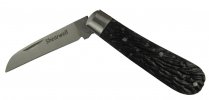

I've been searching through the old catalogue images I have, and the earliest Lambsfoot knives I've found so far are in the 1837 TEW catalogue - that's actually a bit earlier than I'd previously thought.

Although that curious etch almost seems to imply there was a fake or competing Lambsfoot on the market. I might be reading too much into it though.

I've been searching through the old catalogue images I have, and the earliest Lambsfoot knives I've found so far are in the 1837 TEW catalogue - that's actually a bit earlier than I'd previously thought.
Ah, brilliant, I knew something would turn up!
Looking forward to hearing more on these. :thumbup:
Not foolish at all r8shell:thumbup:
You mean a Wostenholm IXL Barlow with Lambsfoot blade?The Eggiington Group, who own many of the old Sheffield marks, produce Lambsfoot Barlows with both both IXL and Rodgers bolsters. I found an IXL Barlow Lambsfoot the other day, probably from the 70's I would think, but what a mess - rather nasty plastic 'stag' covers and a very worn blade
Look forward to seeing the Lambsfoot you have on order :thumbup:
